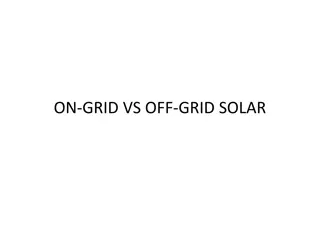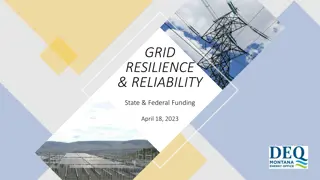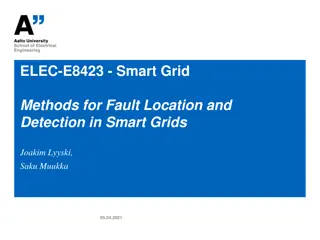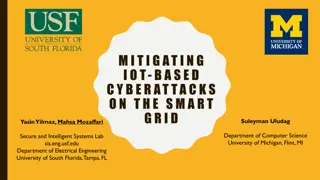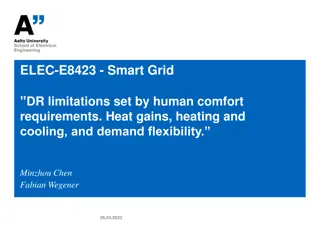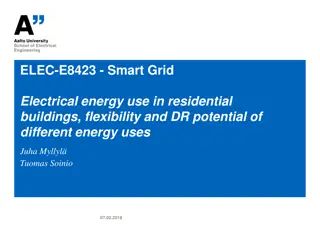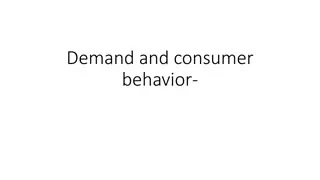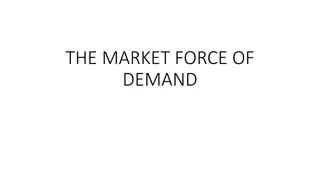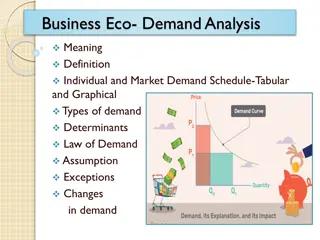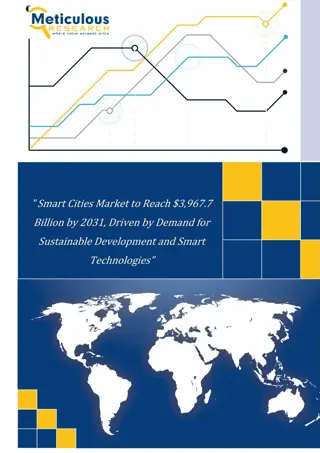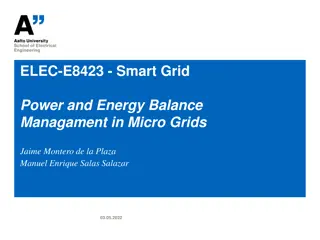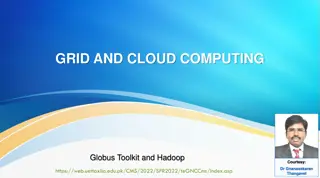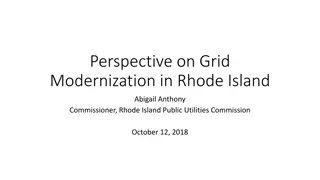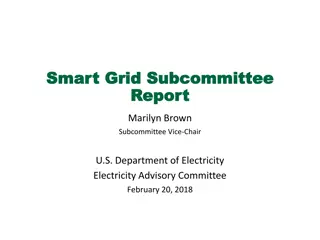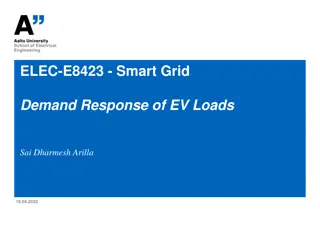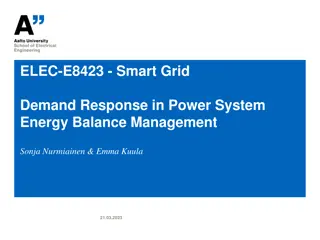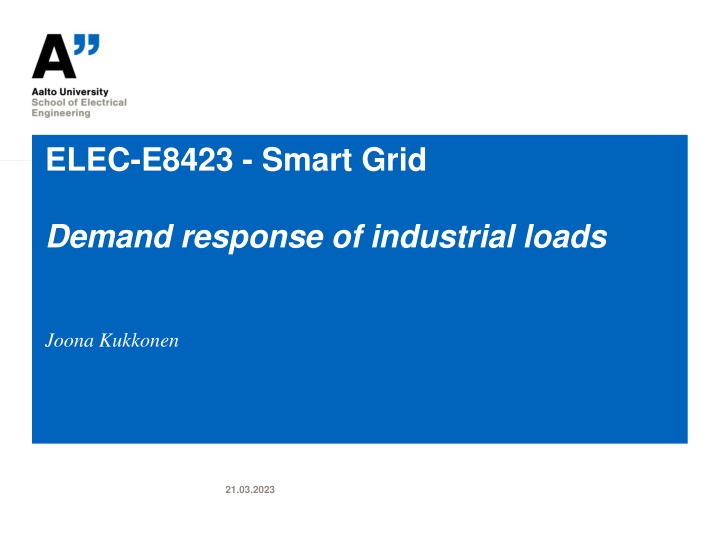
Smart Grid Demand Response in Industrial Sector
Change in power consumption to match supply, reduce peak demand, and control costs. Finland's industrial sector's role in DR programs, energy consumption insights, industrial comparison, demand side flexibility, and DR program categorization.
Download Presentation

Please find below an Image/Link to download the presentation.
The content on the website is provided AS IS for your information and personal use only. It may not be sold, licensed, or shared on other websites without obtaining consent from the author. If you encounter any issues during the download, it is possible that the publisher has removed the file from their server.
You are allowed to download the files provided on this website for personal or commercial use, subject to the condition that they are used lawfully. All files are the property of their respective owners.
The content on the website is provided AS IS for your information and personal use only. It may not be sold, licensed, or shared on other websites without obtaining consent from the author.
E N D
Presentation Transcript
ELEC-E8423 - Smart Grid Demand response of industrial loads Joona Kukkonen 21.03.2023
Introduction Demand Response (DR) is the change in power consumption of demand side to better match the supply side to maintain system stability The industrial sector is a major electricity consumer in Finland A DR program is used to help control peak demand load and lower electricity cost in the wholesale markets Utility companies can instruct industrial customers to reduce their load to help combat dispatching additional power plants Any large industrial consumer is required to curtail demand whenever the load of the grid is critically high 21.03.2023 Page 2
Consumption and demand Electricity consumption is measured in kilowatt-hours (kWh) Electricity demand is the rate (in kW) at which electricity is consumed Figure below illustrates daily demand, as opposed to seasonal demand (U.S. DEPARTMENT OF ENERGY, 2022) 21.03.2023 Page 3
Comparison of Industrial consumption Industry consumption in Finland amounted to around 44% In the EU, industry uses on average 26% of all energy Finland has good long-term prospects in energy efficiency (R s nen, 2022) 21.03.2023 Page 4
Demand side flexibility in Finland Up to 60-70% of paper industry demand offers flexibility On average, roughly 200MW of flexibility is estimated to be available for the metal industry The chemical industry has the least demand side flexibility (P yry, 2018) Major industries in Finland: Paper Metal Chemical 21.03.2023 Page 5
Demand response programs DR programs can be generalized into two categories: Time-based rate programs Incentive-based programs In time-based rate programs the electricity price changes for different periods according to the electricity supply cost In incentive based programs, customers receive incentives or avoid penalties for reducing their load during a specific period (Moghaddam et al., 2011) 21.03.2023 Page 6
Types of time-varying rates (U.S. DEPARTMENT OF ENERGY, 2022) Each time-varying rate is associated with a certain risk and financial reward Varying power prices can be changed based on the tariff, time of day, or market prices These types of DR programs do not wait for a seasonal event to trigger the program protocol, unlike in the incentive based programs 21.03.2023 Page 7
Demand response in industrial facilities Flexible load refers to the strategic use of appliances to shift the timing of electricity demand and restore balance to the grid during peak events The most advanced and newest technology in DR relies on smart manufacturing methods in order to prepare for the dispatch of a DR program Industrial sectors are good candidates for DR programs, because the operations in an industrial facility are more complicated compared to e.g. commercial, leading to more complicated DR utility structure (U.S. DEPARTMENT OF ENERGY, 2022) 21.03.2023 Page 8
Conclusions Industry consumes 44% of electricity in Finland, and thus has good opportunity to increase energy efficiency DR programs aim to lessen the strain on the electricity grid during peak demand events to avoid grid failures Industrial sectors are good candidates for DR programs, because the utilization of flexible loads allows effective demand- side management 21.03.2023 Page 9
Source material used R s nen, M. (2022). Energy saving must be started in Finland but we need the additional input of industry. [online] Korkia blog, 16 August. Available at: https://www.korkia.fi/en/energy-saving-must-be-started-in- finland-but-we-need-the-additional-input-of-industry/ [accessed 20.03.2023] U.S. DEPARTMENT OF ENERGY, 2022. Demand Response in Industrial Facilities:. [online] ORNL/SPR- 2021/2299. Available at: https://betterbuildingssolutioncenter.energy.gov/sites/default/files/attachments/Demand%20Response%20in %20Industrial%20Facilities_Final.pdf [accessed 20.3.2023] McDevitt, C. (2022). What are Flexible Loads? [online] EnergySage blog, 30 September. Available at: https://news.energysage.com/what-are-flexible-loads/ [accessed 20.03.2023] P yry. (2018). DEMAND AND SUPPLY OF FLEXIBILITY. [online] report no. 102001447 Available at: https://www.fingrid.fi/globalassets/dokumentit/fi/sahkomarkkinat/kehityshankkeet/dalyve-fingrid_flexibility- study_final-report_v300-id-151641.pdf [accessed 20.03.2023] Moghaddam, M.P., Abdollahi, A., Rashidinejad, M. (2011). Flexible demand response programs modeling in competitive electricity markets. Applied Energy, vol. 88, no. 9, pp. 3257 3269. Available at: DOI: 10.1016/j.apenergy.2011.02.039 21.03.2023 Page 10




